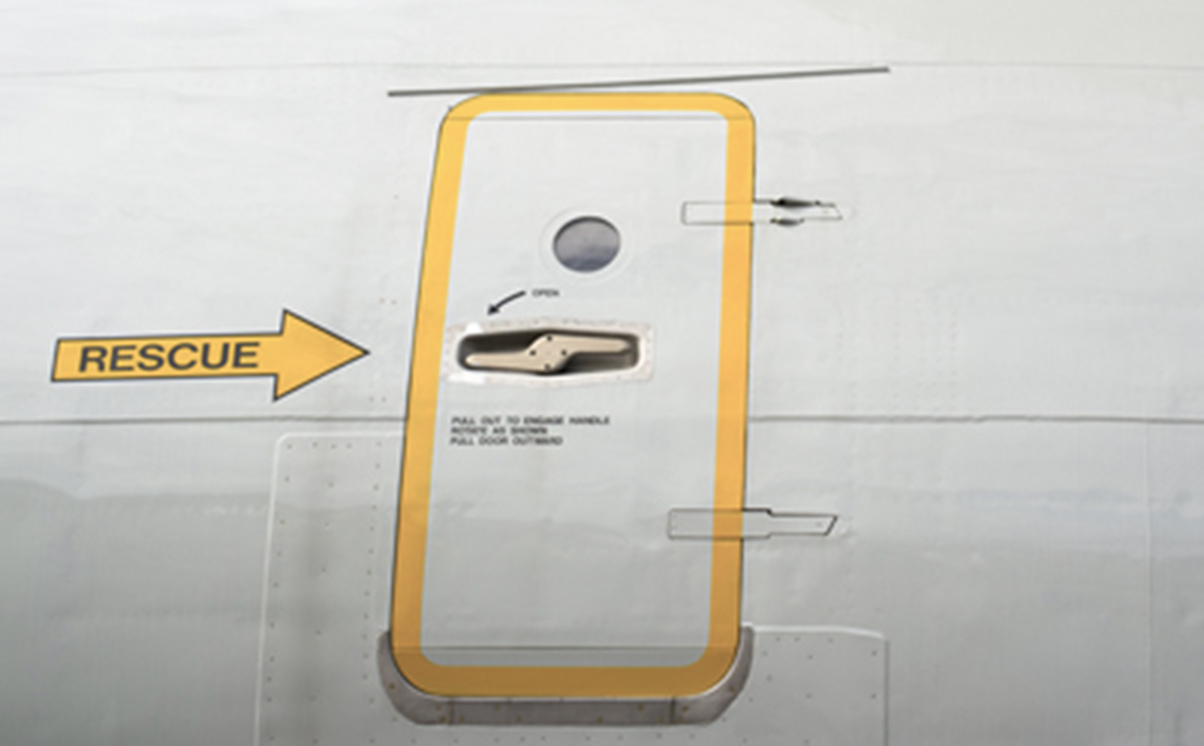The Montreal Convention of 1999 (the ‘Convention’) resulted from the need to modernise the Warsaw Convention (officially the Convention for the Unification of Certain Rules Relating to International Carriage by Air, signed in Warsaw on 12 October 1929). Despite such modernisation, an opportunity was clearly missed, as the Convention remains an area of contention in cases regarding the liabilities of airlines and their obligations to passengers in the event of death and/or injury.
In so far as it relates to PTSD-related claims, this contention stems from the wording of Article 17, which states:
‘The carrier is liable for damage sustained in case of death or bodily injury of a passenger upon condition only that the accident which caused the death or injury took place on board the aircraft or in the course of any of the operations of embarking or disembarking.’
The phrase ‘upon condition only’ was new to the Convention and is not found in the Warsaw Convention, Article 17, which provides:
‘The carrier shall be liable for damage sustained in the event of the death or wounding of a passenger or any other bodily injury suffered by a passenger, if the accident which caused the damage so sustained took place on board the aircraft or in the course of any of the operations or embarking or disembarking.’
Although the meaning of the term ‘death’ is clear, it is the Convention’s reference to an airline’s liability where a passenger has sustained ‘bodily injury’ that has caused debate. The debate has been based around the meaning of the term in order to establish the scope of what should and should not be considered a ‘bodily injury’.
Whether an air carrier could and should be held liable to a passenger for emotional trauma alone was seemingly never discussed during the drafting of the Warsaw Convention, nor the early years after it came into effect. It was the mid-1970s before claims were brought for psychological injury; these claims arising as a result of a number of terrorist hijackings.
Passengers sought compensation for the terror and emotional suffering they had experienced. The litigation that followed raised the question of whether the carrier can be held liable to a passenger who has psychological trauma only, without at the same time having any physical injuries. In trying to answer this question, the courts focused on the official French text in an attempt to ascertain the proper meaning and intention of the words ‘lésion corporelle’ – the French term used in drafting Article 17 that has been translated into ‘bodily injury’.
On 6 September 1970, a Trans World Airlines aircraft was hijacked and forced to land in the desert near Amman, Jordan. In the cases that followed, the court’s approach was not consistent.
In Burnett v TWA 368, F Supp 1152, Civ. No. 9735, D.N.M, (1973), the court in New Mexico looked at the term ‘lésion corporelle’ and noted the difference in French law between bodily injury (lésion corporelle) and psychological injury (lésion mental). The court found the terms to be mutually exclusive and reached the decision that psychological trauma did not fall within Article 17.
By contrast, in Rosman v Trans World Airlines 358, N.Y.S. 2d 97, A.Ct., (1974), the New York Appeals Court looked to an English translation of Article 17 and found the carrier liable for bodily injuries and for the emotional distress relating to the injury. However, it denied recovery for emotional distress unaccompanied by a physical injury and for emotional distress about the accident.
US case law
There are two leading American authorities to which the courts have turned in considering the term ‘bodily injury’.
The first of these is Eastern Airlines, Inc v Floyd USSC 58, 499 US530, (1991). This case concerned an airline that narrowly avoided crashing, and passenger claims for damages for mental distress as a result. The United States Supreme Court concluded that an air carrier cannot be held liable under Article 17 when an accident has not caused a passenger to die, have physical injury, or physical manifestation of injury. Unfortunately, the court did not deal with the question of whether passengers could recover for mental injuries that were accompanied by physical injuries, because the passengers did not allege physical injury or physical manifestation of injury.
The second is Weaver v Delta Airlines Inc 56, F. Supp. 2d 1190, (1999), in which a passenger brought a claim for damages for chronic PTSD that she claimed to have been caused by the terror she felt during an emergency landing.
The claimant produced medical evidence, by way of an affidavit from her doctor, which stated that the impact of the event had caused a bio-chemical reaction that had physical impacts on her brain and neurological system. The airline failed to submit sufficient evidence to raise a factual issue in response, and in the light of this medical evidence the court held the claimant to have satisfied the burden of proof and awarded her damages.
The claim was distinguishable from previous cases because the claimant’s injury was shown by medical evidence to have been accompanied by physical changes to the brain cell structures, and so was a physical as well as a psychological injury. But given the later Court of Appeal decision in In re Air Crash at Little Rock, Arkansas 1 June 1999, 109 F. Supp. 2d 1022, E.D.Ark. 2000, (2011), in which the court held that ‘physical manifestation of mental injuries such as weight loss, sleeplessness or physical changes in the brain resulting from chronic PTSD are not compensable’, it is questionable whether the decision in Weaver remains good law.
UK authorities
The position on what constituted ‘bodily injury’ was reinforced in the UK by the House of Lords in 2002 upon hearing two cases: Morris v KLM Royal Dutch Airlines [2002] UKPC 43 and King v Bristow Helicopters Ltd [2002] 2 AC 628. In King, the claimant had developed PTSD after a forced helicopter landing and subsequently had peptic ulcer disease. In Morris, the claimant acquired clinical depression after being indecently assaulted during a flight by a passenger sitting next to her. The claimant bringing claims for PTSD and clinical depression did not succeed, but the claimant who had the peptic ulcer disease did. This established that mental injury such as PTSD does not constitute ‘bodily injury’ through lack of physical symptom. Without physical symptoms proven to be the result of psychological trauma, there are no grounds for psychiatric illness, shock, fear, anxiety or distress to be linked with or considered as ‘bodily injury’.
In Morris, the House of Lords held:
‘A passenger was not entitled to claim compensation for such a condition. However, if the condition could be shown to have caused an adverse physical symptom, such as a peptic ulcer, or the condition was the expression of physical changes to the brain’s structure, then the requirements of Art.17 would be satisfied because a bodily injury could be shown. “Bodily injury” was a change in part or parts of the body that was sufficiently serious to be capable of being called an “injury”. The definition did not extend to emotional upset such as fear, distress or mental anguish. In order to prove that a physical change had manifested itself in a psychiatric condition and that such change amounted to an injury within Art.17, the passenger had to prove, by expert evidence, that the physical changes had occurred as a result of the accident and that they had led to the psychiatric condition. The passenger would suffer a bodily injury for the purposes of Art.17 if he could prove that the accident had caused brain damage.’
Similar conclusions were made in subsequent decisions such as Cowden v British Airways Plc [2009] 2 Lloyd’s Rep. 653 and Glen v Korean Airlines Co Ltd [2003] EWHC 643 (QB), which further distinguished an airline’s liability to ‘bodily injury’ from non-liable, psychological injury.
However, a decision by the New South Wales (Australia) Supreme Court changed all this, albeit momentarily, in the case of Pel-Air Aviation Pty Ltd v Casey [2017] NSWCA 32.
Pel-Air Aviation Pty Ltd v Casey
This case concerned a flight between Samoa and Melbourne in November 2009, arranged to obtain urgent medical treatment for a passenger in Australia. Among those on board was Ms Casey, a nurse who was sent to treat the passenger during the flight.
Severe weather conditions exhausted fuel supplies and a refuelling stop was planned on Norfolk Island. After four failed attempts to land, the aircraft had used up the last of the fuel and the pilot was forced to ditch the plane in the ocean. Remarkably, the occupants survived the impact and were eventually rescued by a fisherman after spending 90 minutes in the middle of the ocean following the sinking of the plane.
It was not surprising that Ms Casey sustained significant physical injuries, including spinal injuries and an injury to her right knee. In addition, she had PTSD, a major depressive disorder, an anxiety disorder and developed a complex pain syndrome.
Ms Casey brought a claim against Pel-Air under the Montreal Convention and judgment was entered in her favour; she recovered damages in respect of all of her injuries, including her PTSD. The judge concluded that ‘a diagnosis of PTSD does not exclude the possibility that evidence in a particular case may establish that a person has suffered a bodily injury compensable under the Montreal Convention’. She said that the evidence before her established ‘that the PTSD which Ms Casey suffers and for which she has also been unsuccessfully treated, is consequent on damage to her brain and to other parts of her bodily processes, which have had the result that her brain is no longer capable of functioning normally’.
In conclusion, the court found that either the PTSD was at least in part a manifestation of the bodily injury, or that that bodily injury caused or contributed to the PTSD, or there was a combination of the two. Whichever it was, the court said, the result was that the PTSD Ms Casey acquired, was a compensable bodily injury.
While Pel-Air’s defence relied on cases such as In re Air Crash at Little Rock Arkansas, Terrafranca v Virgin Atlantic Airways Ltd 151, F 3d 108, 3d Cir., (1998), and Rosman v Trans World Airlines Inc 34, NY 2d 385, (1974), the Supreme Court decided that Pel-Air had paid insufficient attention to two Australian cases, Kotsambasis v Singapore Airlines Ltd [1997] 42 NSWCR 110 and American Airlines Inc v Georgeopolous (No2) [1998] NSWSC 463, which left open the issue of whether psychiatric injuries could be compensable under the Montreal Convention and the Carriers’ Liability Act, 1959 (which incorporates the Convention into Australian Law).
But earlier this year, the New South Wales Court of Appeal found that the primary judge had erred in concluding that Ms Casey’s PTSD constituted a ‘bodily injury’. In quashing the decision at first instance, the Court of Appeal found that while ‘bodily injury’ does not exclude consideration of damage to a person’s brain, there must be evidence of actual physical damage to the brain. The court held that there was no evidence that Ms Casey’s PTSD resulted from actual physical damage to her brain.
It also considered whether the evidence provided of biochemical changes in her brain constituted ‘physical damage’. While the primary judge had rejected some of the international cases which Pel-Air Aviation had relied on, the Court of Appeal drew on these same cases in deciding that evidence of abnormal brain functioning and chemical imbalance was not enough to prove a bodily injury.
In reaching this decision, the Court of Appeal realigned the Australian position with the position internationally, reaffirming that the term ‘bodily’ purposefully distinguishes bodily injury from psychological injury.
It stated that psychological injuries are covered only if they are a manifestation of physical injuries or if they result from physical injuries (including physical injuries to the brain). The difficulty for Ms Casey was that the evidence did not, in the opinion of the Court of Appeal, demonstrate that her PTSD resulted from actual physical damage to her brain. Instead, the PTSD could be attributed to biochemical changes in the brain. In the court’s view, this could not be said to constitute a ‘bodily injury’.
Jane Doe v Etihad Airways United Airlines
Any analysis would not be complete without reference to the US Court of Appeals for the Sixth Circuit ruling on 30 August 2017 in the case of Jane Doe v Etihad Airways United Airlines, P.J.S.C., No. 16-1042, 6th Cir., (30 August 2017) which, reversing a lower court decision made by the US District Court for the Eastern District of Michigan, found Etihad Airways liable for damages to a passenger for mental distress because the damage resulted from an accident that caused physical injury.
Jane Doe was the claimant travelling on an international flight from Abu Dhabi to Chicago, during the course of which she unexpectedly pricked her finger on a hypodermic needle hidden in the seat pocket in front of her. She claimed for damages for physical injury as well as emotional distress linked to fears that she may have contracted HIV or hepatitis.
The US Court of Appeals concluded that mental injuries are recoverable if they are caused either by a compensable bodily injury, or by the accident that causes the compensable bodily injury. Here, it said, the accident was the needle pricking Doe’s finger. The accident happened on board Etihad’s aircraft. And Etihad conceded that the accident caused bodily injury.
Etihad was found liable for Doe’s damage sustained, which included both her physical injury and the mental anguish she was able to prove that she sustained. This was regardless of whether the anguish was directly caused by the physical hole in Doe’s finger or by the fact that Doe was pricked by a needle.
It remains to be seen if Etihad will appeal to the US Supreme Court.
The future
While Doe does not alter the fact that a passenger cannot recover damages for mental anguish if there is no requisite accident, or if that accident does not cause a bodily injury, it suggests that the Convention does not necessarily require a single accident to cause both the bodily injury and the claimed mental anguish. The court’s decision therefore leaves unresolved the question of recovery for mental anguish or psychological harm where they are unaccompanied by an obvious physical injury.
In recent decisions, there has been discussion over further developments in the area of medicine associated with psychological injury or psychiatric issues, such that the scope of the term ‘bodily injury’ as laid out in the Convention may well be extended in due course.
It is foreseeable, for example, that medical research will be produced to support the argument that psychiatric disorders can cause physical changes to the brain, suggesting that the mental could constitute the physical further down the line. Such a scenario would not necessarily require the scope itself to be extended, but may suggest that there will become more ways for courts to find that a set of circumstances fits within the existing scope.
One of the Convention’s main purposes was to achieve unified rules governing claims arising from international carriage by air. While the Australian Court of Appeal’s decision in Pel-Air appears to solidify the position on the ability of the carrier to exclude a range of psychological complaints, the decision in Doe leaves a door open to the possibility of linking psychiatric claims to bodily injury caused in one accident. Quite apart from the fact that recovery for purely mental injuries is not recognised in many of the signatory states in any event, clearly we are still a long way from unification.
This article first appeared in PI Focus and APIL publication – find out more here.
You can find further information regarding our expertise, experience and team on our Aviation pages.
If you require assistance from our team, please contact us or alternatively request a call back from one of our lawyers by submitting this form.
Media contact: Lydia Buckingham, Senior Marketing Executive, +44 (0) 20 7822 8134, lbuckingham@stewartslaw.com





